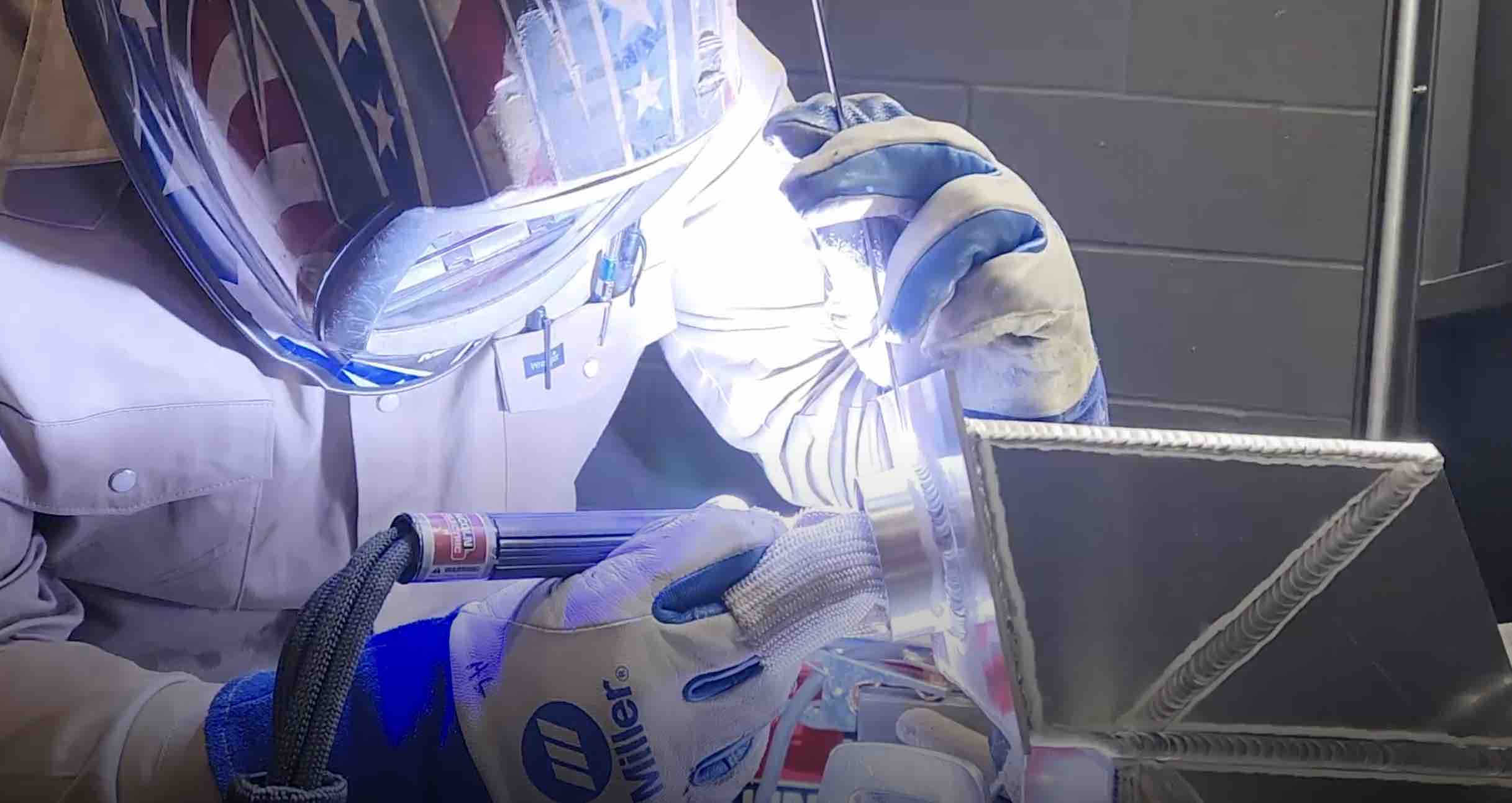Aluminum Welding Repair
This is an aluminum weld repair mock up. I pulled this part out of the scrap and it looks like it was used to set up a CNC program but since it has a big gap machined out, I thought it might be a good way to demonstrate using backing for aluminum weld repairs where there is a gap.
- HOME
- TIG WELDING ALUMINUM
- How to Tig Aluminum
- Aluminum Welding
Machine settings for this Aluminum Welding repair:
- Amperage set to 210 and controlled with foot pedal
- AC balance set to 65% en
- AC frequency around 80 hz
- 3/32" (2.4mm) 2% lanthanated electrode rounded tip
- 3/32" 2.4mm) 4043 filler rod.
I used a big piece of stainless steel round stock for backing here. Stainless Steel because it wont contaminate the aluminum, and plenty thick so it wont melt. Using stainless sheet metal would not be a good idea on a weld repair like this because it would likely melt. Stainless steel also has a low thermal conductivity and will not draw much heat out of this block of aluminum. Thats important because I often weld with 200 amp inverter type welders and sometimes 200 amps is just barely enough for something this thick.
By selecting a piece of round stock that is slightly smaller than the inside diameter of the part I am welding, the stainless steel backing will do 2 things:
- The stainless backing will "cast" the weld metal and not let it penetrated too far. For parts like this that will be dressed down by hand or machined, its really helpful to control how much the weld metal protrudes on the inside.
- The backing will also help to trap or
confine the argon shielding gas. Whenever you tig weld aluminum on an
edge, there is a tendency to lose gas coverage due to the Venturi effect
of the gas being split. The backing traps gas and makes for a better
shielded and cleaner weld than you would get without backing.
Also, notice the sequence of the weld....I started on the very corner where heat would build easily and gradually worked my way in to the thicker area. By doing this, I didnt have to use a preheat at all and after one or two beads were welded on each side of the gap, I had just the right amount of heat in the part. From there it was a matter of letting the piece cool for about a minute in between beads to prevent overheating.
When I had both sides built up with weld to a point where they could be easily joined, I welded a bead joining the 2 sides.
I figured there would be some touch up work to be done on the inside and so I swapped out the long tail on the tig torch for a short button cap that allowed for access inside. Then it was just a matter of welding one bead down the middle where I joined the two sides.
One thing I need to mention is that before I even got started welding the first bead I decided that rather than try to keep a sharpened point on my electrode, that I would use a rounded tip.
For the main part of the welding, I was around 200 amps with a 3/32" (2.4mm) 2% lanthanated electrode and at certain frequencies, almost any electrode will develop little nodules.
I decided to avoid that, I would just set my AC balance to max cleaning to round the tip and it worked very well. Arc starts were just a bit unstable at low amperage but at welding amperage, the tip stayed the same from start to finish. Just what I wanted.
So what is the take away from this weeks video?
Stainless Steel backing, if its thick enough, can really help on filling gaps on aluminum welding repairs.
see more videos on aluminum welding















